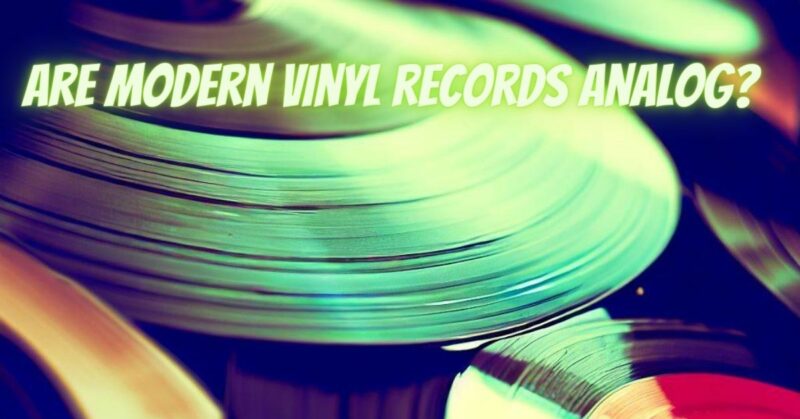The resurgence of vinyl records has brought with it a renewed appreciation for analog sound and tactile engagement. However, the question arises: Are modern vinyl records truly analog in the same way as their vintage counterparts? As technology evolves and production processes change, understanding the complexities of modern vinyl records is essential. This article explores the nuances of modern vinyl records and delves into whether they retain the pure analog essence of the past.
1. The Analog Ideal:
Analog audio reproduction involves capturing the continuous variations of sound waves, translating them into electrical signals, and then back into sound through amplification. This process was the hallmark of vintage vinyl records, capturing the raw and organic characteristics of music. The analog nature of vinyl lent it a distinctive warmth and character, which many audiophiles and music enthusiasts cherish.
2. The Digital Frontier:
In the modern era, the music production process has been revolutionized by digital technology. Most music is recorded, mixed, and mastered digitally using digital audio workstations (DAWs). Digital tools provide precision and efficiency, allowing for detailed manipulation of sound. However, this raises the question of whether modern vinyl records can maintain the pure analog essence of their predecessors.
3. Vinyl Production Process:
Modern vinyl records involve a blend of analog and digital processes. While the recording and mastering stages often utilize digital technology, the process of creating vinyl involves analog steps. After the mastering process, a digital master is created. This master is then used to create a lacquer master, which is a physical template for pressing vinyl records. The vinyl pressing process itself involves analog techniques, such as stamping the grooves onto vinyl pellets.
4. Digital Masters and Pressing Artifacts:
The use of digital masters in the vinyl production process has led some purists to question the authenticity of modern vinyl records. Digital masters are used to cut the grooves onto the lacquer, and certain nuances of the original analog recording may be lost in this translation. Additionally, the transfer from digital to analog during mastering introduces the possibility of artifacts or alterations to the sound.
5. Mastering Choices:
The way modern vinyl records are mastered can significantly influence their analog qualities. Some vinyl mastering engineers prioritize preserving analog warmth and dynamics, carefully considering the limitations and strengths of the format. However, the loudness war and the desire to compete with digital formats can lead to mastering choices that compromise the analog integrity of vinyl.
6. Listener Perspective:
The perception of whether modern vinyl records are truly analog is subjective and depends on individual listeners’ expectations and preferences. Some listeners may prioritize the authentic analog sound, while others appreciate the marriage of analog and digital techniques that modern vinyl offers. For many, the tactile engagement and nostalgic appeal of vinyl remain central to the vinyl experience, regardless of the intricacies of production.
The question of whether modern vinyl records are truly analog is complex and multifaceted. Modern vinyl represents a fusion of analog and digital technologies, combining the tactile charm of vinyl with the precision of modern production processes. While the debate continues, what remains unchanged is the emotional connection that vinyl records offer, bridging the past and present through the timeless act of music appreciation.

